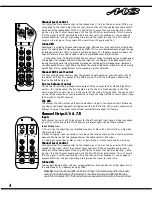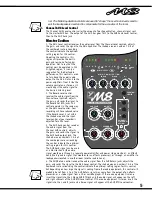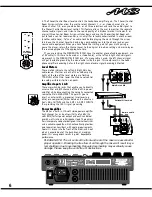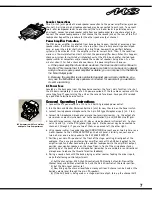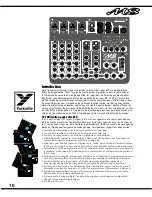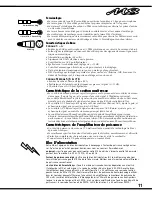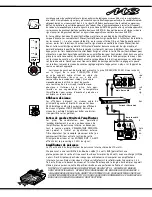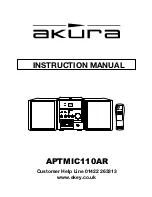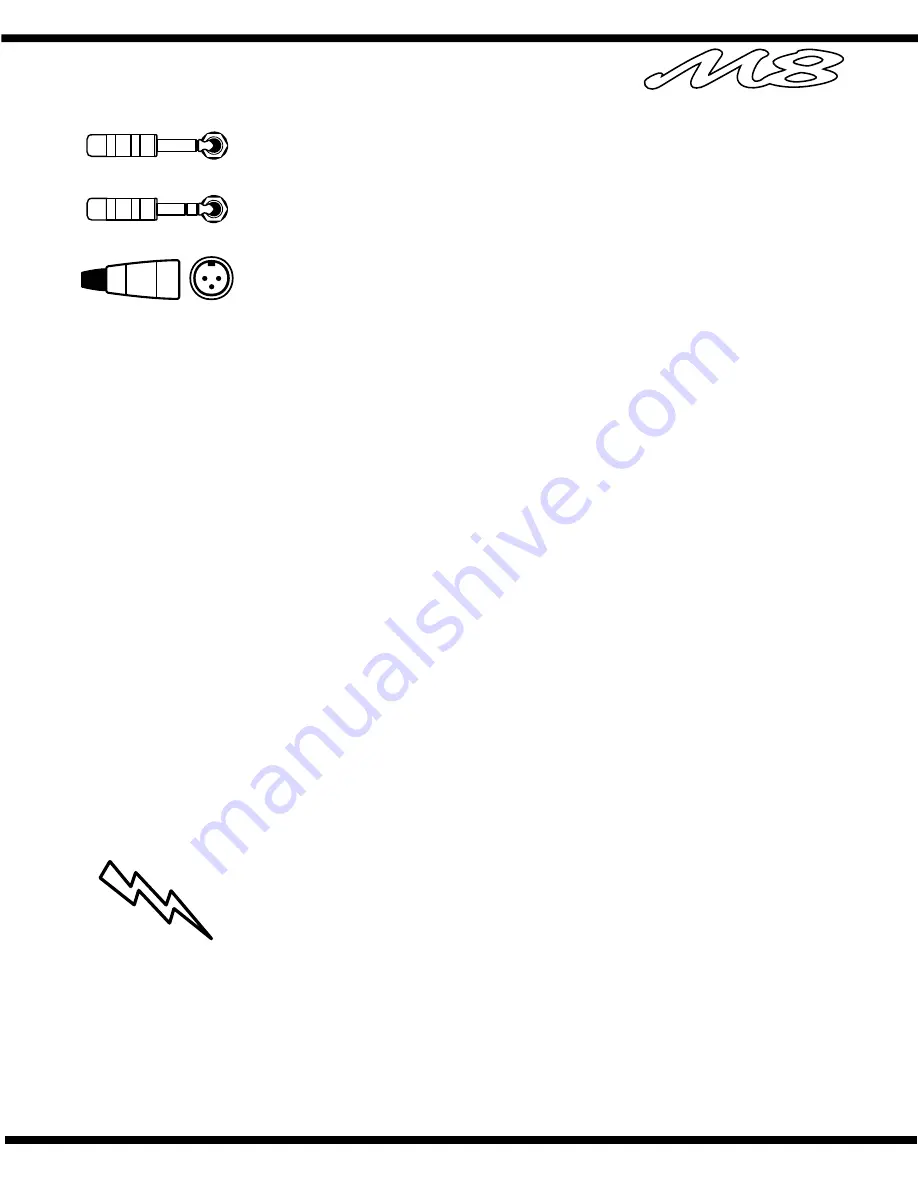
2
Terminology
• 3-pin microphone inputs are referred to as XLR connectors.
• 1/4-inch jack sockets are called phone connectors.
• Balanced 1/4-inch inputs or outputs are called TRS or Tip-Ring-Sleeve
• Master control and mixing channels are called busses.
• Overload indicators are called Clip LED's.
• Patch cables with dual conductors plus shielding and ring-tip-sleeve (stereo) 1/4-
inch phone plugs are referred to as balanced patch cables.
Basic Features
Channels 1 - 4
• XLR Microphone and balanced TRS Line inputs with low-noise input circuit design.
• Balanced Line inputs accept either balanced or unbalanced lines.
• Phantom power (24 volts).
• Extremely wide input GAIN-adjustment.
• AUX send controls are post-EQ.
• Three-band EQ with +/-15 dB of range.
• Pan controls provide constant gain levels at all settings.
• Increased circuit headroom and gain for a more flexible mix.
• Clip LED's indicate even the briefest peaks, and fire at -3dB, well before the onset
of actual clipping, at any active channel stage.
Stereo Channels 5/6 & 7/8
• Left and Right RCA inputs.
• Low and High frequency-shelving EQ (+/- 15dB).
• AUX send controls are post-EQ.
Master Features
• The Main Level control receives the audio signal from the Channel Level controls,
adjusts the gain, and sends the signal to the Main EQ.
• The Record Level control receives the audio signal from the Channel Level con-
trols, adjusts the gain, and sends the signal to the Record Out RCA jacks.
• The AUX Send control receives the audio signal from the Channel AUX controls,
adjusts the gain, and sends the signal to the AUX Send output jack.
• The AUX Return control receives the audio signal from the AUX Return jacks
adjusts the gain, and sends the signal to the Main Level control.
• The Phones/Control Room level controls the headphone amplifier gain. The
Phones/Control Room Assign switches allow the user to select channels 1-4, or
stereo channel 5/6, or stereo channel 7/8 or any combination or all three selections
and send the audio signal to the Phones/Control Room level control.
Power Amplifier Features
• A total output of 170 watts with well-proven, reliable Audiopro technology.
• Industry leading specifications for distortion, damping, and efficiency.
• Comprehensive protection against low or even shorted loads, and overheating.
• Hi-Current 1/4-inch output connectors.
Power Supply
Your M8 contains a universal power factor corrected switch mode power supply. What is that
and why should you care? Well let me tell you:
universal:
means that you can power your M8 from any wall receptacle around the world
from 90 to 275 VAC, 50 or 60 Hz.
power factor corrected:
means that the power supply makes the best use of every watt of
power the M8 draws from the wall receptacle. Better than any conventional power amplifier.
switch mode power supply:
is a power supply that delivers the same operating power sup-
ply voltages to the circuitry inside the M8, even if the hydro source voltage sags down to
90 VAC. So the 2 x 85 watt power amplifier will deliver 2 x 85 watts at a hydro voltage from
90 to 275 VAC. Only the latest hi-tech touring power amplifiers can claim to do the same. A
conventional 100 watt amplifier without a switch mode power supply will deliver 100 watts
to the loudspeaker at 120 VAC, but only deliver 56 watts with a hydro voltage of 90VAC. The
M8 will deliver 2 x 85 watts at 90VAC!
1/4-inch Phone Plug
1/4-inch T.R.S. Phone Plug
XLR Plug
Summary of Contents for M8
Page 22: ...20 ...






